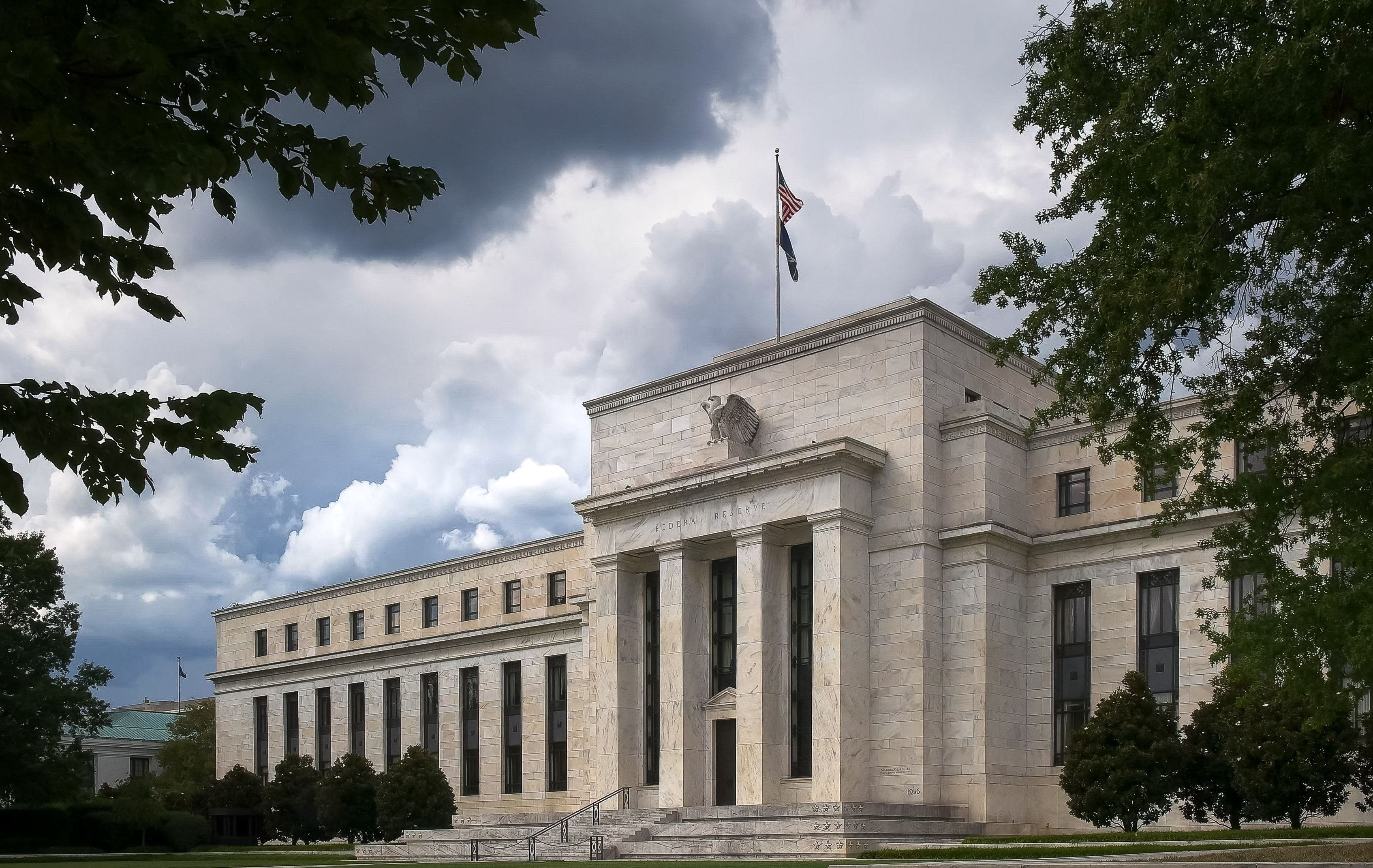Volatile Stock Market’s 10% Correction Stokes Investor Fears
But market corrections are surprisingly common and surprisingly short-lived. Bear markets are another story. Here’s what you need to know.


The Dow Jones industrial average plunged more than 1,000 points twice this week. More significantly, the Dow and Standard & Poor’s 500-stock index have now each lost more than 10% from their all-time highs set just two weeks ago. The stock market is officially in a “correction.”
Corrections are surprisingly commonplace, typically occurring about every two years. And as the word implies, the market is correcting its excessive previous rise. Stocks moved too high too fast, by this definition.
The crucial question for today’s long-term investors, of course, is does the selling stop here or do we plunge another 10% or so into official bear market territory? I’ll examine the evidence, which is increasingly worrisome, momentarily.
From just $107.88 $24.99 for Kiplinger Personal Finance
Be a smarter, better informed investor.

Sign up for Kiplinger’s Free Newsletters
Profit and prosper with the best of expert advice on investing, taxes, retirement, personal finance and more - straight to your e-mail.
Profit and prosper with the best of expert advice - straight to your e-mail.
But first: There’s a reason this correction feels worse that any correction I can recall in 35 years of watching markets. It’s not your imagination. Blame it on large numbers. In 1987, the Dow plunged 508 points in one day—and sustained a loss of 22.6%, the largest one-day decline in the Dow’s history. On Monday and again on Thursday, the Dow lost almost twice that many points, yet the combined loss from both days was only 8%.
Additionally, it has been two years since the last correction, and the market was less volatile in 2017 than it had been in any calendar year since 1964. We grew accustom to smooth sailing.
What’s more, the correction happened so quickly. Less than two weeks earlier, on Jan. 26, stocks achieved record highs. No doubt the computer programs that dominate stock market trading played a huge role in how rapidly the market sank. So did the exchange-traded instruments that profited from low market volatility—and got clobbered when volatility spiked.
What’s driving investors’ fears of a stock market crash?
But fundamentally, there have been a couple of changes in the outlook in the past two weeks. Bond yields are rising. That makes it more expensive for companies to borrow, reduces the present-day value of companies’ future cash flows, and makes bonds more competitive with stocks for investors’ dollars.
Incoming Federal Reserve Chairman Jerome Powell hasn’t given any indication he’ll push interest rates up more rapidly than Janet Yellen would have. But the Fed is expected to raise rates three times this year. Increased federal borrowing to pay for the gargantuan tax cut and the government’s giant two-year spending plan put real upward pressure on interest rates.
Then there’s inflation. A little, and that’s all we have now, is a plus for the stock market. But if inflation shows signs of accelerating, the Fed will raise rates higher and faster than currently expected—which would likely kill the nine-year-old bull market.
There are other reasons to worry. Jim Stack, president of InvesTech Research, is my longtime favorite strategist. He reduced his allocation to stocks over the last two weeks, just before the selloff, from 82% to 74% and is focusing on defensive stocks: consumer staples and health care.
He’s not predicting a bear market yet, but plainly the risks have risen. “Whether we have seen the final bull market highs, it’s going to be a volatile, unsettling year for investors,” he says.
Stack bases his concerns partly on the high stock market valuations, rising bond yields and a falling dollar.
But his key worry is that the market’s technical picture is eroding. Technical analysts look at the action of the market itself to predict which way it will go. They get bearish when they see increasing numbers of stocks making 52-week lows, as well as a narrowing of the number of stocks going up. When investors are clustering in a handful of stocks or a couple of sectors, dangers rise.
Stack isn’t predicting a bear market yet because the economy is so strong. But he’s getting more worried, and he doesn’t expect a quick rebound for stocks. He thinks the market highs are in place for at least the next several months and possibly for the rest of the year.
Bear markets vs. stock market corrections
The strong U.S. economy is certainly a plus for the bull market. Unless and until we get strong signals that leading economic indicators, such as consumer confidence and purchasing managers plans, are sharply weakening, it’s hard for me to see a recession anytime soon. And the stock market almost never slips into a bear market without a recession either already here or in sight.
Only about one in three corrections lead to bear markets. Since the end of 1945, the market has sustained 21 corrections, defined as losses of 10% to 19%. (This doesn't include 12 other corrections that blossomed into full bear markets with declines of 20% or more.) The peak-to-trough declines of corrections averaged 14% over five months, and it took only another four months for the market to fully recover.
Bear markets are another story. Peak-to-trough declines average 33% over 14 months. And it takes an average of just over another two years for the market to recover its lost ground.
One note of optimism comes from Sam Stovall, chief investment strategist at CFRA Research. “Sharp and swift selloffs have traditionally led to quick conclusions and rapid recoveries,” he says.
I wouldn’t sell into this market—yet. But if you want to reduce your risk, consider shifting some money into these high-quality mutual funds: Parnassus Core Equity Investor (symbol PRBLX), American Funds American Mutual Fund F-1 (AMFFX), AMG Yacktman Fund (YACKX) and FPA Crescent (FPACX). I recommended all four funds last March as hedges against a bear market because the funds are highly likely to hold up much better than the major market averages if stocks continue to tumble.
Steven Goldberg is an investment adviser in the Washington, D.C., area.
Profit and prosper with the best of Kiplinger's advice on investing, taxes, retirement, personal finance and much more. Delivered daily. Enter your email in the box and click Sign Me Up.

-
 A New Kind of HELOC Lets Homeowners Fund Remodels on Their Terms
A New Kind of HELOC Lets Homeowners Fund Remodels on Their TermsFinance home upgrades gradually, using the equity you already have.
-
 Ten Retirement Tax Plan Moves to Make Before December 31
Ten Retirement Tax Plan Moves to Make Before December 31Retirement Taxes Proactively reviewing your health coverage, RMDs, and IRAs can lower retirement taxes in 2025 and 2026. Here’s how.
-
 What the Rich Know About Investing That You Don't
What the Rich Know About Investing That You Don'tPeople like Warren Buffett become people like Warren Buffett by following basic rules and being disciplined. Here's how to accumulate real wealth.
-
 How to Invest for Rising Data Integrity Risk
How to Invest for Rising Data Integrity RiskAmid a broad assault on venerable institutions, President Trump has targeted agencies responsible for data critical to markets. How should investors respond?
-
 What Tariffs Mean for Your Sector Exposure
What Tariffs Mean for Your Sector ExposureNew, higher and changing tariffs will ripple through the economy and into share prices for many quarters to come.
-
 How to Invest for Fall Rate Cuts by the Fed
How to Invest for Fall Rate Cuts by the FedThe probability the Fed cuts interest rates by 25 basis points in October is now greater than 90%.
-
 Are Buffett and Berkshire About to Bail on Kraft Heinz Stock?
Are Buffett and Berkshire About to Bail on Kraft Heinz Stock?Warren Buffett and Berkshire Hathaway own a lot of Kraft Heinz stock, so what happens when they decide to sell KHC?
-
 How the Stock Market Performed in the First 6 Months of Trump's Second Term
How the Stock Market Performed in the First 6 Months of Trump's Second TermSix months after President Donald Trump's inauguration, take a look at how the stock market has performed.
-
 Fed Leaves Rates Unchanged: What the Experts Are Saying
Fed Leaves Rates Unchanged: What the Experts Are SayingFederal Reserve As widely expected, the Federal Open Market Committee took a 'wait-and-see' approach toward borrowing costs.
-
 Fed Sees Fewer Rate Cuts in 2025: What the Experts Are Saying
Fed Sees Fewer Rate Cuts in 2025: What the Experts Are SayingFederal Reserve The Federal Reserve cut interest rates as expected, but the future path of borrowing costs became more opaque.